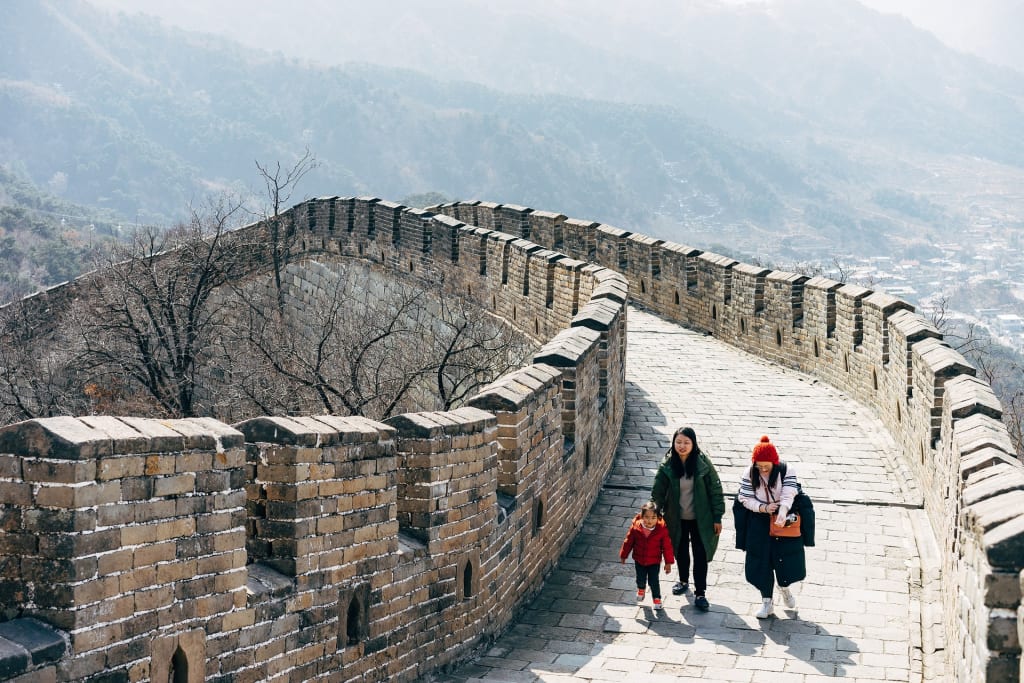China's Population Shift: A Changing Landscape with Global Implications
Unraveling China's Demographic Transformation: Challenges and Opportunities in a Shifting Population Landscape

China, the world's manufacturing superpower, has been experiencing a remarkable transformation in its population dynamics over the past few decades. In this blog post, we will delve into the intricate details of China's birth and death rates, examine the historical policies that influenced population growth, and explore the far-reaching consequences of its shifting demographics. Join us on this journey as we unravel the challenges and opportunities that China faces in the wake of its population decline.
The Rise and Fall of Birth Rates
Over the last 60 years, China has predominantly witnessed high birth rates, contributing to its massive population size. However, a significant turning point occurred in 2022 when the country recorded more deaths than births, resulting in a population decrease for the first time in six decades. This is a pivotal moment with wide-ranging implications, considering China's pivotal role as a manufacturing powerhouse, with nearly 30% of its economic output coming from manufacturing.
Population Snapshot and Projected Decline
Despite the population decline in 2022, China's population remains substantial, with approximately 1.4 billion people. However, projections indicate a dramatic decrease of almost half by the end of the century. These shifts can be attributed to China's historical growth trajectory and population control policies. As China seeks to reverse the declining trend and stabilize its population, it grapples with the pressing question of whether it may be too late to address the issue effectively.
The Complex Legacy of Population Policies
China's population control measures have had a profound impact on its demographic landscape. In the 1950s, under Mao's leadership, the country faced a devastating famine, leading to a spike in deaths and subsequent population decline. However, the aftermath of the crisis resulted in a baby boom, coupled with advancements in healthcare that reduced infant mortality rates. To address the population explosion, the government introduced the "Later, Longer, Fewer" policy, promoting delayed marriages, longer birth intervals, and fewer births. Subsequently, an extreme one-child policy was implemented in 1980, accompanied by coercive measures such as sterilization campaigns and induced abortions. Although these policies successfully controlled population growth, they also had unintended consequences.
Challenges of Unique Family Structures
The one-child policy gave rise to a unique family structure known as "4-2-1," where a couple has four parents above them and only one child below. This structure places immense pressure on the single child to support aging parents and grandparents. Moreover, rising living costs and financial pressures have deterred many young people from having multiple children, despite efforts such as cash subsidies, longer maternal leaves, and kindergarten support. The lifelong commitment and expenses associated with raising a child make it increasingly difficult for families to consider expanding.
The Implications of an Aging Population: China's population crisis extends beyond declining birth rates; it also involves maintaining a balance between the young and old. The population pyramids illustrate a narrowing base representing fewer babies and a significant bulge at the top, symbolizing a larger elderly population. While improved healthcare and living standards are positive outcomes, sustained low fertility rates exacerbate the challenge of population aging. By 2050, China's population pyramid is projected to skew further, leading to a declining population, a shrinking labor force, and placing the country in a uniquely difficult position.
The Economic Impacts
China's rapid economic growth propelled it to become a major global player, but its economic success did not uniformly benefit all its citizens. Disparities exist between urban and rural areas, and China still lags behind high-income countries in terms of GDP per capita. The challenge lies in establishing the necessary social infrastructure, including healthcare and pension programs, to support its aging population. As the economy slows down, China's role as a manufacturing superpower may need to be redefined, with resource constraints affecting both its domestic and global ambitions.
China's population shift carries significant implications for the country and the world at large. The decline in birth rates, coupled with an aging population, poses numerous challenges, from socio-economic implications to the need for social support structures. While China seeks to reverse the population decline and stabilize its demographics, the complex legacy of population control policies and changing family structures present formidable obstacles. As China navigates these challenges, the consequences will extend beyond its borders, reshaping its role as a global superpower and prompting us to reflect on the future of a changing China.





Comments
There are no comments for this story
Be the first to respond and start the conversation.